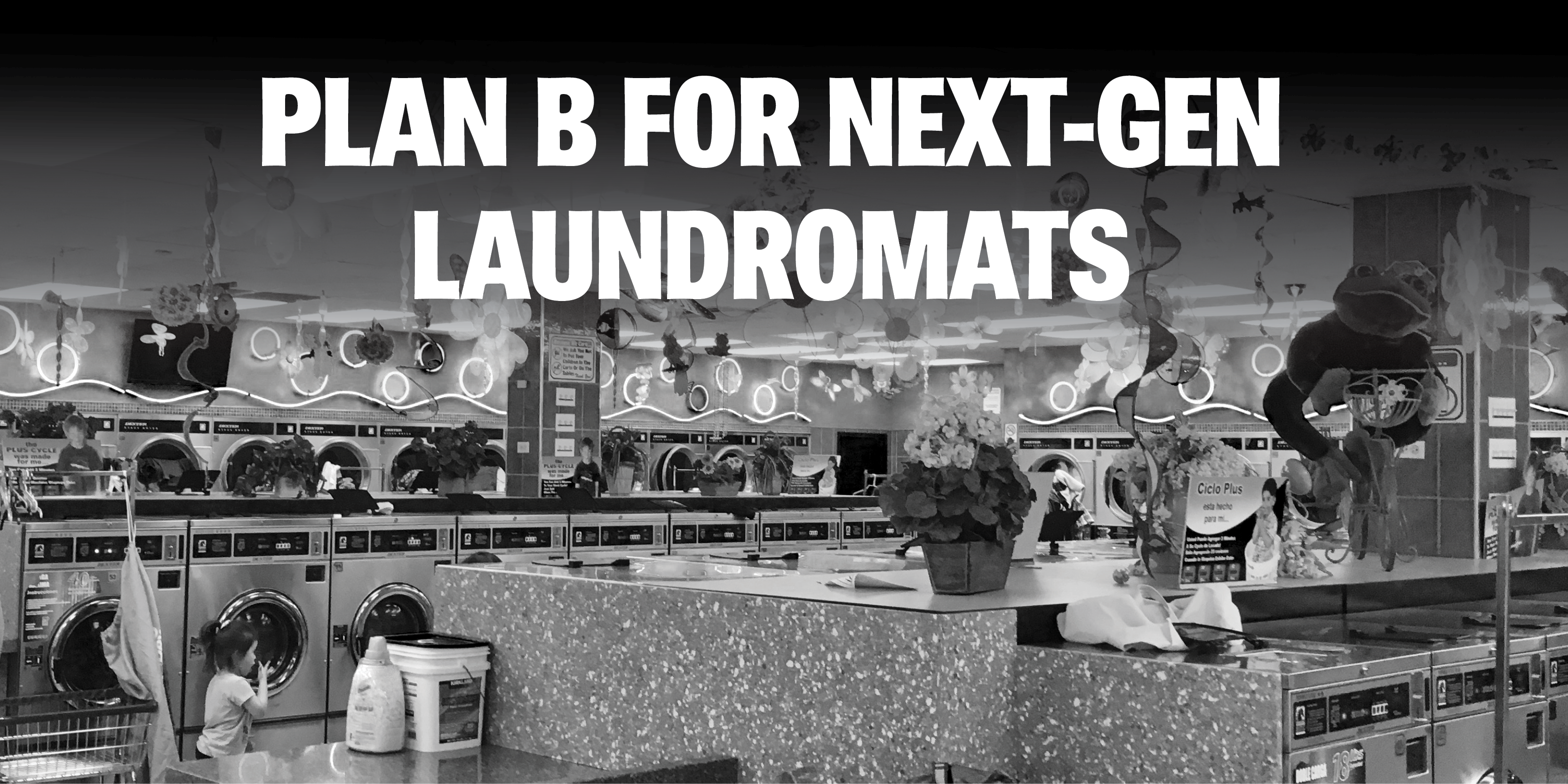Plan B for Next-gen Laundromats
Technology connects us. That is until it doesn’t.
Just ask Tesla owners whose batteries got drained in frigid Chicago weather.
Or Australians crippled by a massive 12-hour nationwide internet outage.
Laundromat operators certainly aren’t immune. They took to Facebook recently when a popular pay platform went offline during peak weekends.
“We are completely coinless,” commented one of those impacted. “It’s either credit card or loyalty card at our store, and with the servers down we did zero business from 11am to 8 pm.”
She wasn’t alone. A fellow operator asked another if quarters could still be accepted. The response: “Machines take coins. But I do not have changers.”
For them and many others there was no Plan B.
Frozen EV drivers couldn’t pivot from charging stations to gas stations. Restaurateurs down under with disconnected tablets didn’t have enough cash in their registers to ring sales.
And the hybrid pay laundry owners who tossed coins by the wayside weren’t getting spins.
Perhaps they grew comfortable with readers and didn’t see the need for a coin system — even as a backup. Or maybe, just maybe, they bought into the narrative that using coinage in laundromats should be discouraged, if not completely eliminated.
Either way, the vulnerability of relying solely on a single pay platform was exposed.
Times have changed
Once upon a time laundromats were mechanical — toggles and knobs, levers and dials. The few moving parts meant easy fixes. My dear ol’ dad only called in help to tackle a rare Milnor washer bearing job.
These days, owners better hold degrees in electrical engineering and IT. Your typical 30-washer/30-dryer card store boasts more readers than a Walmart superstore. Take a guess who’s charged with managing such a vast network.
Built for backup
With laundromat pay it’s not a matter of if, but when. Having a backup in the event of failure is critical.
Coin-op store design is built around redundancy. Spare changers are a given, along with enough washers and dryers to ensure that if one wrinkled bill or bent quarter gets stuck there will be plenty of others available.
The rising popularity of hybrid pay cemented the importance of built-in redundancy. Reliable coin drops have cutting-edge tech’s back.
Sadly, coin finds itself increasingly downplayed by manufacturers, distributors and end-user operators. The move has left a portion of the industry vulnerable.
More and more owners are reliant on payment companies to keep them up and running.
Control is becoming more centralized — not just at the provider level, but inside the store as well — a trend many are uneasy with.
Six decades in the making
Machine break-ins plagued the laundromat industry just as it was ramping up. One invention, the Temco-Matic, was introduced in 1960 to thwart would-be thieves.
This self-service, coin-operated central control could activate up to 52 washers and 26 dryers at varying price levels, dispense change, and drop money directly into a safe. It was hailed as “the most modern, convenient system ever devised for coin-ops.”
That innovation opened the door for laundry equipment manufacturers to play a major role in which alternative pay technologies got rolled out.
Frigidaire, which was marketing turnkey stores at the time, was the first to make its machines compatible with the Temco-Matic kiosk.
Maytag’s ticket system, which debuted in 1962, also centralized cash, but moved alternative pay technology back onto laundry equipment.
Customers first purchased wafer-thin encrypted plastic chips from a coin slide-operated dispenser and then redeemed them at electronic readers mounted to an individual machine’s meter housing. The spent tickets were held in locked vaults awaiting collection and recirculation.
Years later, loyalty cards got a boost when Dexter brought the reloadable plastic Easy Card to locations nationwide. Today, they join other manufacturers in promoting proprietary smartphone app pay.
The long history of equipment builders backing alternative pay systems hasn’t changed the fact that coin still leads by every metric.
For the vast majority of self-service vended laundries coinage is Plan A.
Coin offers redundancy
The pandemic exposed coin’s vulnerability as circulation seized up and the banking system was slow to respond.
But savvy coin-op owners didn’t suffer. Redundancy was built into their stores with a multi-coin/token pay platform.
Unlike quarter-only store operators, they were their own bank. Coin’s golden brass substitute was right there if access to circulating quarters or dollars was compromised.
Those employing next-gen pay technologies find themselves in the same boat. Disruptions can and do happen. Maintaining coinage simply makes good business sense.
Hybrid pay at the machine means redundancy. Plan B starts with the letter C.

Laurance Cohen is part of the Imonex team and welcomes inquiries on innovative payment solutions for your business.
laurance@imonex.com
(954) 999-7785


